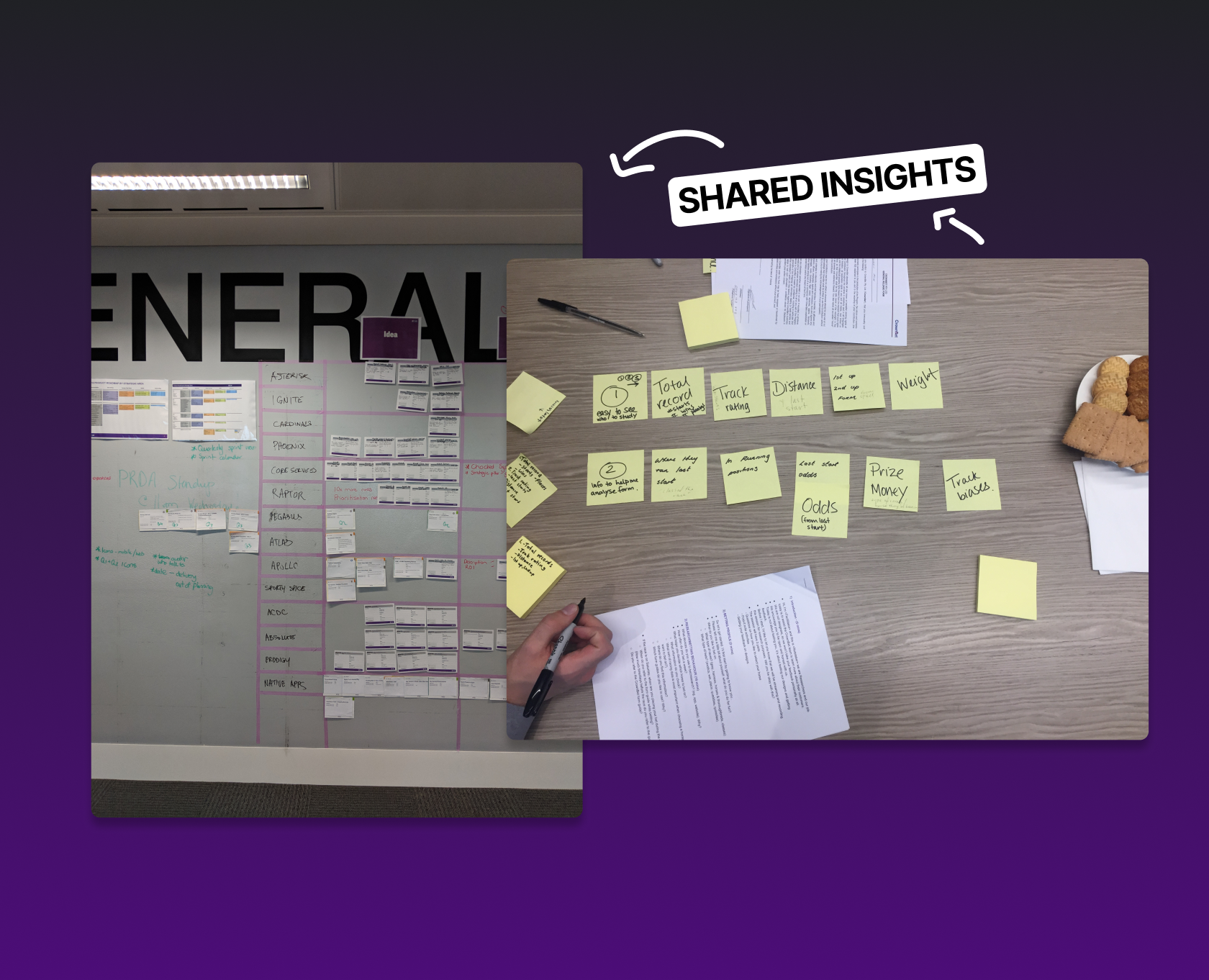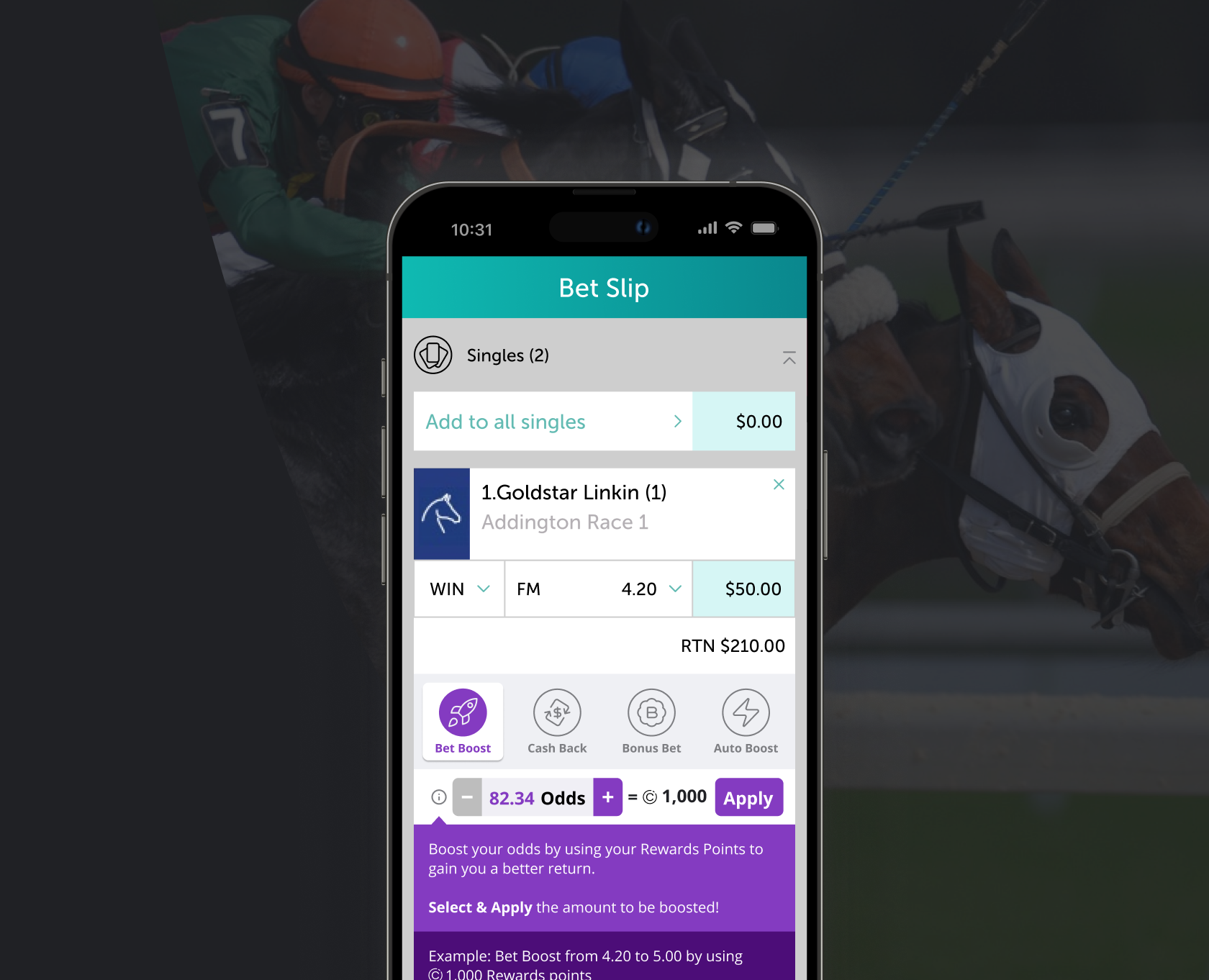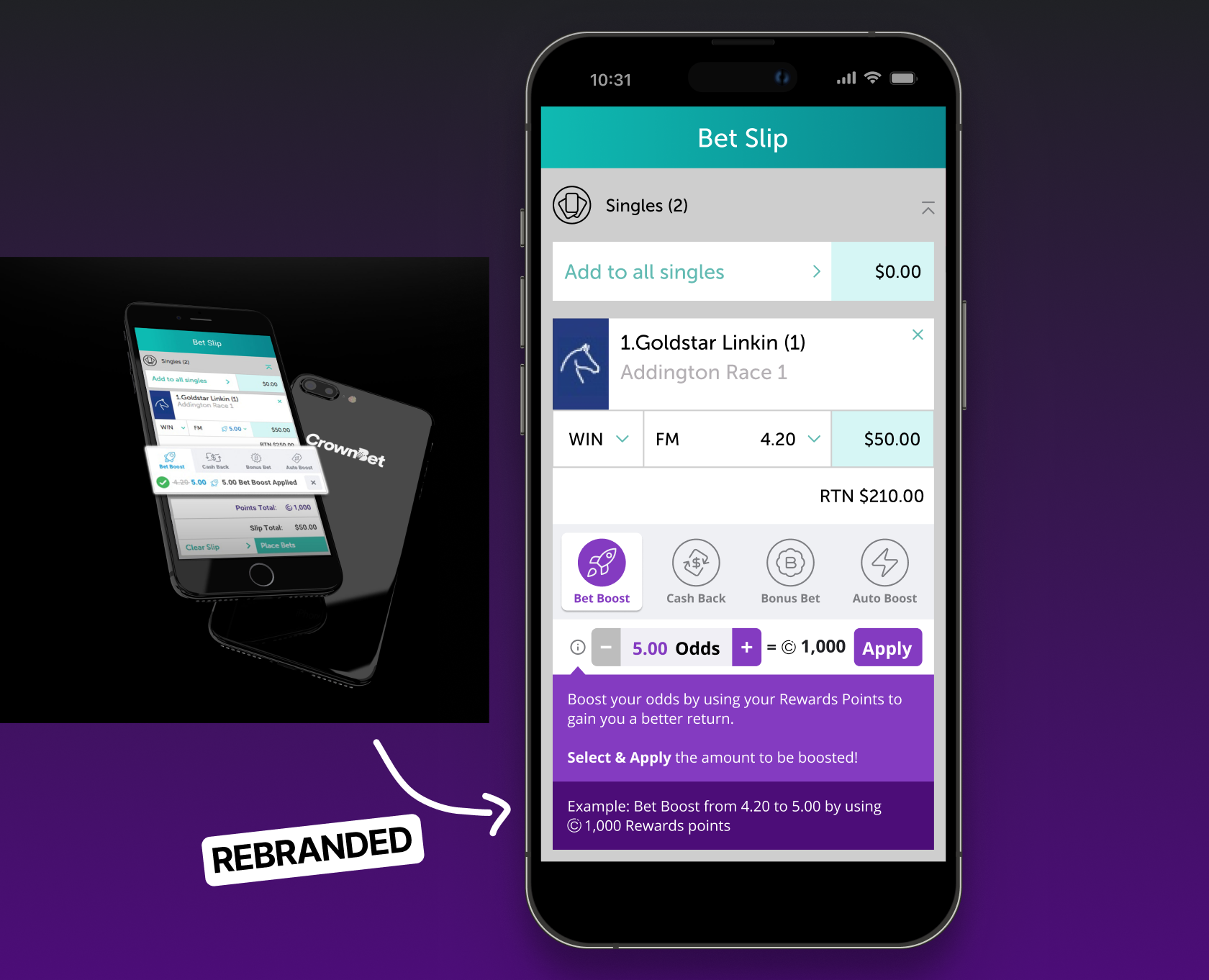


Innovative Design Journey
With the launch of Melbourne Spring Racing Carnival, CrownBet needed
to create engaging features that would serve the purpose of a great experience,
and encourage users to re-enter into a Rewards points program.
As a lean team of 2 Product Designers, we carried out research, design,
and delivery of the product.
Stakeholder interviews allowed us to give the the process transparency,
in a mid-sized organisation with many touch points.
it helped us understand who was more hands-on than others.
Competitive analysis was crucial to see what was out there in the market at this time.
Keeping an open mind we compared this to other industries, such as Frequent Flyer points,
Airline websites redeeming for bonuses. Exploring different alternatives
to think strategically.
User research activities had a tight deadline.
We discovered quantitative data that was available from the Voice of Customer department relating to odds, the ability to increase odds and other variables around value for money when placing a bet.
Affinity mapping was a good way to map and group together similar pain points into clusters.
Credibility was the main theme we saw from the data collected.
Wireframing & UI design was part of the approach to keep this process lean and follow up with feedback from the insights gathered.
Through a series of meetings with Stakeholders and Product Managers,
final designs were decided on.
Usability testing using the usertesting.com service we were able to find participants to give feedback on the designs.

Design Process Overview
In this project, I focused on creating a user-centered design that not only meets the needs of the target audience but also aligns with the brand's vision. The initial phase involved thorough research, where I gathered insights through user interviews and competitive analysis. This groundwork was essential in shaping the design direction and ensuring that the final product would resonate with users.
The design process was iterative, involving multiple rounds of feedback and refinement. I utilized wireframes and prototypes to visualize concepts, allowing stakeholders to engage with the design early on. This collaborative approach fostered a sense of ownership among the team, ensuring that everyone was aligned on the project goals.
Visual aesthetics played a crucial role in this project. I opted for a minimalistic style, focusing on clean lines and a cohesive color palette that enhances usability. The typography was carefully selected to ensure clarity and accessibility, making the content easy to digest for users.
Upon completing the design, I conducted usability testing to gather real-world feedback. This step was invaluable, as it highlighted areas for improvement and validated the design choices made throughout the process. The outcome was a product that not only looked great but also provided a seamless user experience.
Overall, this project exemplified the power of collaboration and iterative design. By engaging with users and stakeholders throughout the process, I was able to create a solution that truly meets the needs of its audience, resulting in a product that stands out in the competitive landscape.
